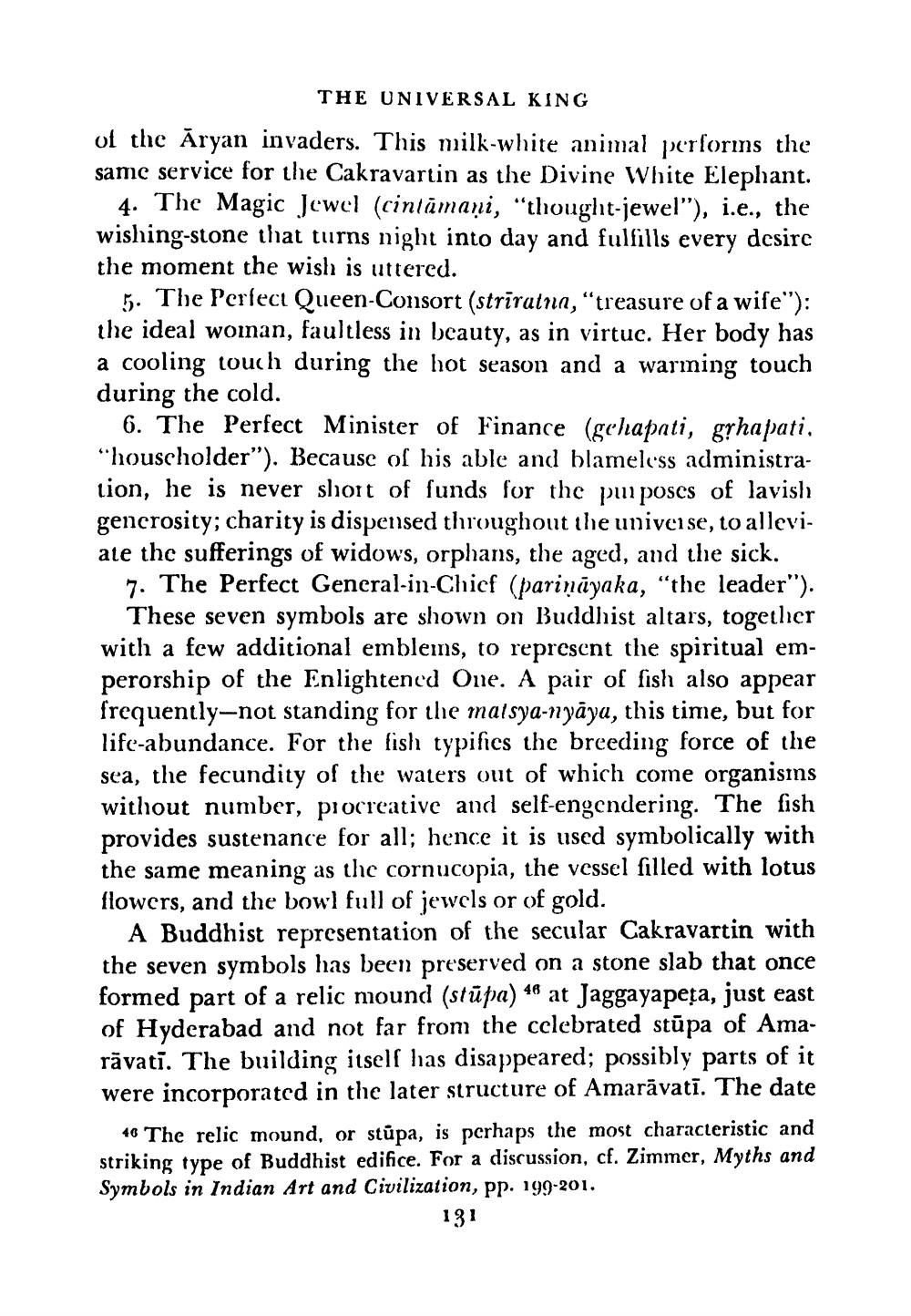________________
THE UNIVERSAL KING of the Āryan invaders. This milk-white animal perforins the same service for the Cakravartin as the Divine White Elephant.
4. The Magic Jewel (cintāmaņi, “thought-jewel"), i.e., the wishing-stone that turns night into day and fulfills every desire the moment the wish is uttered.
5. The Perfect Queen-Consort (strīratna, "treasure of a wife"): the ideal woman, faultless in beauty, as in virtuc. Her body has a cooling touch during the hot season and a warming touch during the cold.
6. The Perfect Minister of Finance (gchapati, gļhapati, "houscholder"). Because of his able and blameless administralion, he is never short of funds for the purposes of lavish gencrosity; charity is dispensed throughout the univeise, to alleviate the sufferings of widows, orphans, the aged, and the sick.
7. The Perfect General-in-Chief (pariņāyaka, “the leader").
These seven symbols are shown on Buddhist altars, together with a few additional emblems, to represent the spiritual emperorship of the Enlightened One. A pair of fish also appear frequently-not standing for the malsya-nyāya, this time, but for life-abundance. For the fish typifies the breeding force of the sea, the fecundity of the waters out of which come organisins without number, procreative and self-engendering. The fish provides sustenance for all; hence it is used symbolically with the same meaning as the cornucopia, the vessel filled with lotus flowers, and the bowl full of jewels or of gold.
A Buddhist representation of the secular Cakravartin with the seven symbols has been preserved on a stone slab that once formed part of a relic mound (stūpa) 48 at Jaggayapeța, just east of Hyderabad and not far from the celebrated stūpa of Amarāvati. The building itself has disappeared; possibly parts of it were incorporated in the later structure of Amarāvati. The date
46 The relic mound, or stúpa, is perhaps the most characteristic and striking type of Buddhist edifice. For a discussion, cf. Zimmer, Myths and Symbols in Indian Art and Civilization, pp. 199-201.
131




